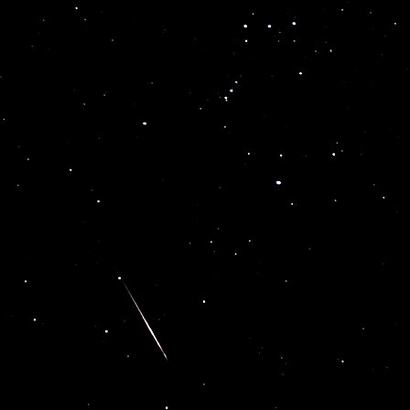Meteor Showers : Leonids
Leonids Meteor Showers occur when the Earth encounters debris left from comet Tempel-Tuttle, and are the cosmic equivalent of bugs hitting the windshield of an automobile. However in the case of the meteor shower, the vehicle is the Earth on its journey around the Sun, and the bugs are tiny sand-grain-sized particles traveling at speeds of over 140,000 miles per hour. When these particles are vaporized in the Earth' s atmosphere, we observe the heat and light associated with the streaking particle as a meteor blazing across the sky.
Comet Tempel-Tuttle enters the inner solar system every 33 years, each time leaving behind a fresh trail of dust and debris. When the Earth encounters such a trail of debris, we can observe a meteor shower or storm. Over time, a given debris stream from the comet will lengthen, but remains fairly narrow and dense. Thus we can see episodes of increased Leonids activity not only in the year when the comet makes its swing into the inner solar system, but also for several years around this point in time.
For 2006 the Leonids will appear in November. While Tempel-Tuttle will have been on its out-bound journey from the inner solar system for over 8 years, there remains the possibility of a small and well-defined outburst visible from parts of western Europe and Africa, as the Earth passes directly through the debris stream from the visit of the comet in 1932. The shower is predicted to peak at about 04:45 UT on November 19, with a Zenith Hourly Rate of about 100 meteors per hour.
Image : NASA


